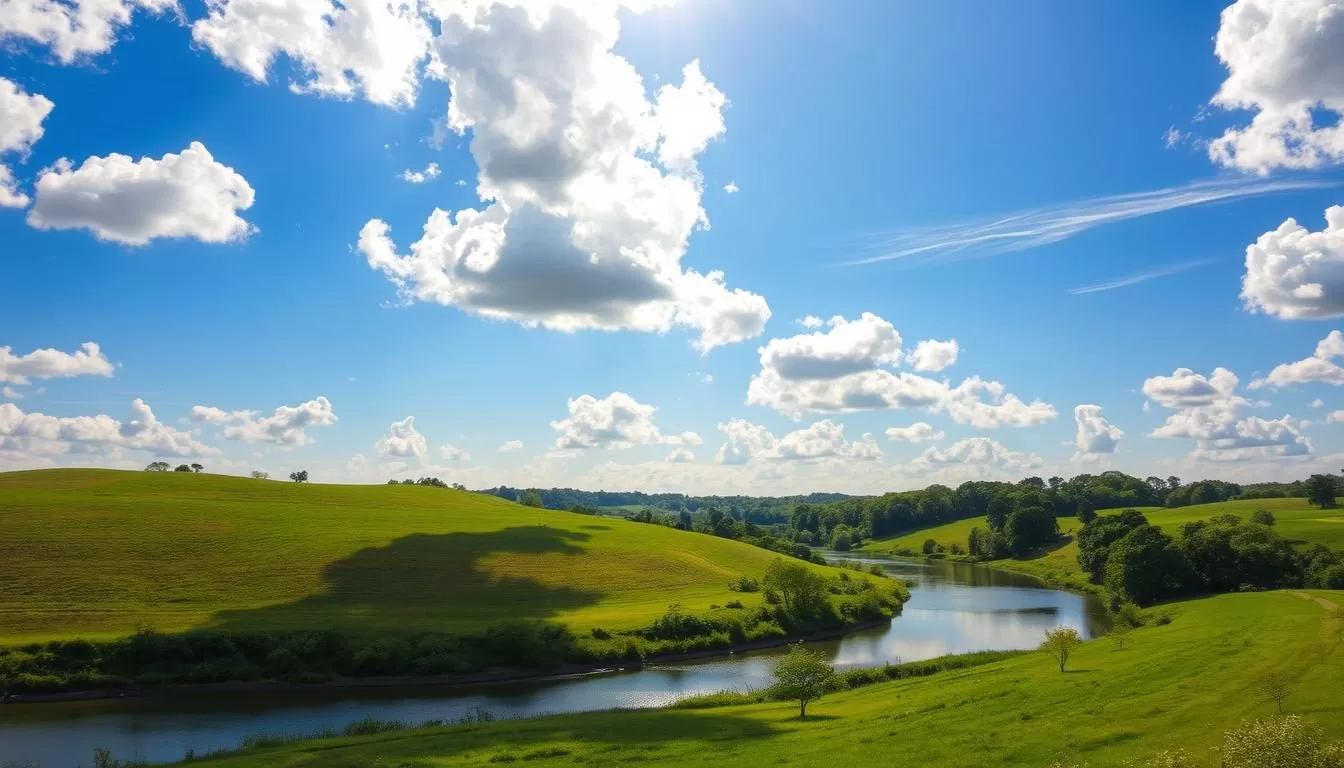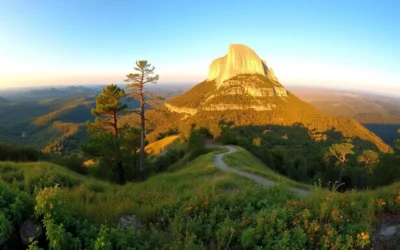✓ Accommodations ✓ Flights ✓ Rental Cars ✓ Tours & Activities
Planning a trip to Arkansas requires understanding the state’s diverse weather patterns to make the most of your visit.
As you prepare for your adventure, consider that Arkansas experiences all four distinct seasons, each offering unique experiences for travelers from across the United States.
The weather varies significantly from the Ozark Mountains in the north to the lowlands in the south, creating microclimates worth considering when planning your trip.
This comprehensive guide will help you determine the ideal time to visit based on your weather preferences and planned activities, ensuring you pack appropriately and schedule the right activities for an unforgettable adventure.
Understanding Arkansas’s Climate and Weather Patterns
Understanding the climate and weather in Arkansas is crucial for planning a trip. The state’s climate is considered subtropical, with warm, humid summers and short, cool winters.
Four Distinct Seasons in the Natural State
Arkansas experiences four distinct seasons throughout the year. Little Rock, the capital, serves as a good reference point for understanding the state’s general weather patterns. The temperature variations are notable, with humidity levels fluctuating seasonally. In the summer months, the humidity can make the temperature feel more oppressive.
The state’s climate is characterized by its subtropical nature, with the USDA Hardiness Zone for Little Rock being 8a, though some maps classify it as 7b.
How Gulf and Canadian Air Masses Influence Arkansas Weather
The weather in Arkansas is influenced by two major air masses: the warm, moist air from the Gulf of Mexico and the cold, dry air from Canada. This creates dynamic weather conditions throughout the year.
| Air Mass | Characteristics | Impact on Arkansas Weather |
|---|---|---|
| Gulf of Mexico Air Mass | Warm, Moist | Increases humidity and temperature |
| Canadian Air Mass | Cold, Dry | Decreases temperature and humidity |
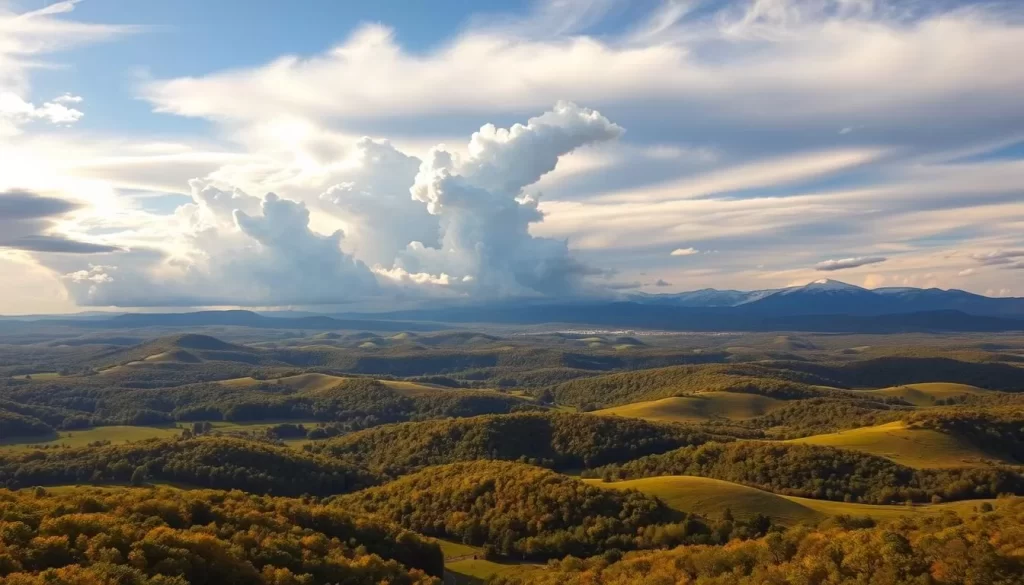
Spring in Arkansas: A Blooming Paradise (March-May)
As the last wisps of winter dissipate, Arkansas transforms into a vibrant landscape, inviting you to experience the beauty of spring. The season brings a gradual warming of temperatures, making it an ideal time to explore the Natural State.

March: Transition Month with Tornado Awareness
March serves as a transition month in Little Rock and throughout Arkansas, with the latter part of the month seeing leaves and flower buds beginning to open. However, visitors should remain aware of the tornado season that begins this month.
April: Perfect Weather and Wildflowers
April brings more consistent warmer temperatures and is considered the first true spring month, though it also has the highest average rainfall and potential for severe weather. This early spring period is the time when the cabin fever blues of winter are washed away by spring showers and sunshine.
May: Ideal Outdoor Adventure Month
May stands out as one of the most popular months for traveling in Arkansas, offering mild weather ideal for extended outdoor activities. The pleasant days in Little Rock and the surrounding natural areas make it an ideal time to explore, with abundant wildflowers and lush vegetation on display.
During the spring months, you can enjoy comfortable days exploring the state’s natural beauty, from swollen rivers and streams to vibrant wildflowers.
Summer in Arkansas: Managing the Heat and Humidity (June-August)
The Natural State transforms during the summer months, with the weather playing a significant role in shaping your travel experience. As you plan your activities, understanding the nuances of the summer weather in Arkansas is crucial.
June: Early Summer Pleasures
June marks the beginning of summer in Arkansas, with temperatures gradually rising. The early part of the month is usually pleasant, with fairly moderate temperatures and clear skies, making it ideal for outdoor activities. However, as the month progresses, the heat and humidity begin to increase, especially in urban areas like Little Rock.
July: Peak Heat and Water Activities
July is the peak of summer heat in Arkansas, with temperatures often reaching triple digits. The hot humid conditions can feel oppressive, particularly when combined with high humidity levels. This is a time when water activities become the most popular, with lakes, rivers, and swimming pools offering relief from the summer heat.
August: Hot and Dry Conditions
August is generally considered the pinnacle of summer heat and humidity in Little Rock and throughout Arkansas. Temperatures frequently reach the triple-digit range, and the humidity levels remain high. The average rainfall in August is relatively low, at 2.6 inches, creating hot and dry conditions.
| Month | Average High Temperature | Average Rainfall |
|---|---|---|
| June | 89°F | 3.5 inches |
| July | 92°F | 3.2 inches |
| August | 93°F | 2.6 inches |
Despite the challenging weather conditions, summer in Little Rock offers the longest daylight hours, providing extended time for early morning or evening outdoor activities when temperatures are more tolerable.
Fall in Arkansas: The Season of Colors (September-November)
Arkansas’s fall season is a treat for the senses, with the natural beauty of the state on full display. The fall season brings a spectacular display of colors as temperatures gradually cool.
September: Transition from Summer Heat
September serves as a transition month from summer heat to autumn’s cooler weather. The first half of the month often feels like an extension of summer, but pleasant conditions usually prevail by the last week. In Little Rock, the average temperature in September is around 86°F/65°F.
October: Prime Fall Foliage Month
October marks the true beginning of fall in Arkansas, with vibrant fall colors first appearing in the Ozarks and northern sections by the second week. Mid to late October provides peak fall foliage in northern Arkansas.
November: Cooling Temperatures and Late Colors
By November, the temperatures continue to cool, with averages in Little Rock dropping to 63°F/42°F. The first part of November generally provides peak fall color displays in the central to southern regions of the state.
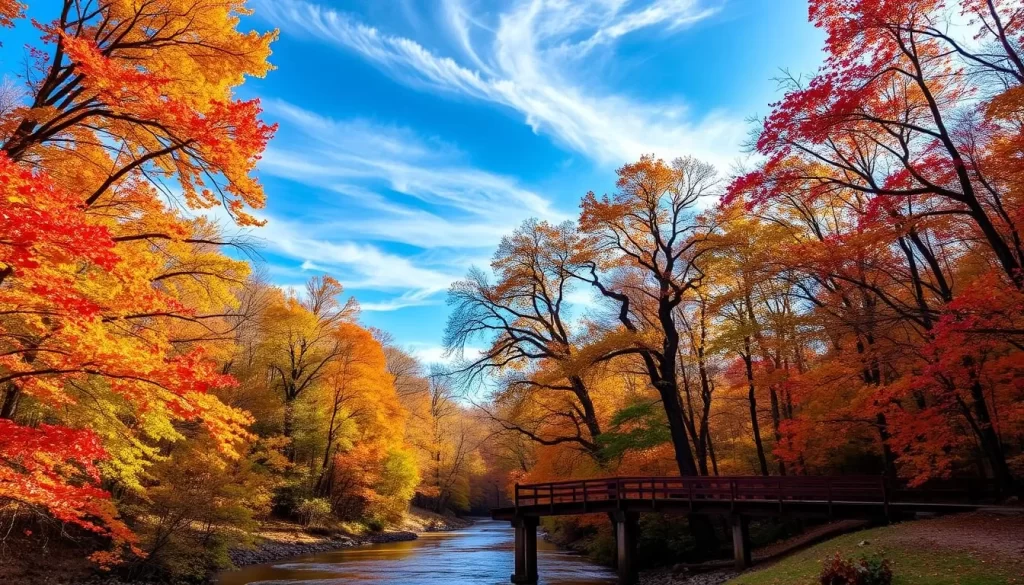
Winter in Arkansas: Mild but Variable (December-February)
Winter in Arkansas brings a unique blend of mild temperatures and occasional chill. You can experience the serene landscapes and mild climate that characterize this season in the Natural State.
December: Early Winter Chill
December marks the beginning of winter in Arkansas, with heavy frosts becoming common. The temperatures rarely dip below 30 degrees Fahrenheit, making it a great time for those who prefer cooler weather without the harsh cold.
January: Coldest Month with Occasional Snow
January is the coldest month, with temperatures often falling below the average minimum. It’s also the month with the heaviest snowfall, averaging 2.3 inches. Be prepared for icy road conditions, especially in rural areas.
February: Similar to January with Signs of Spring
February continues the winter pattern, with occasional variations in low temperatures and icy road conditions. However, by the end of the month, you might start to see early signs of spring.
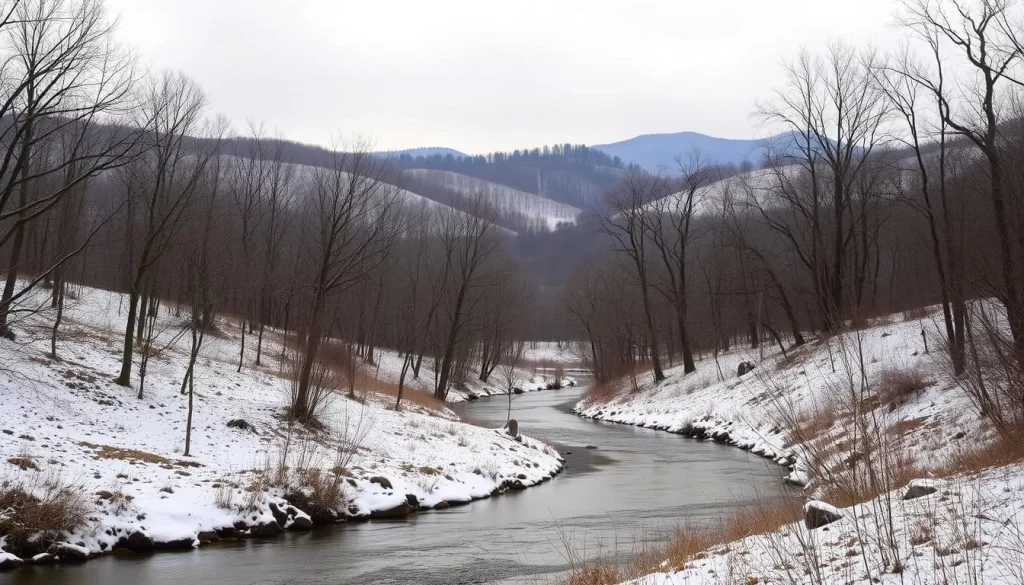
| Month | Average Low Temperature (°F) | Average Snowfall (inches) |
|---|---|---|
| December | 34 | 1.1 |
| January | 32 | 2.3 |
| February | 35 | 1.4 |
The winter season in Arkansas is characterized by mild temperatures, with average lows ranging from 34°F in December to 35°F in February. Snowfall is generally light, with a total seasonal average of 4.5 inches.
Arkansas, United States: Best Months for a Weather-Savvy Trip
To make the most of your trip to Arkansas, it’s crucial to select the right months based on your preferences and planned activities. The state’s diverse climate means that some months are more suitable for a visit than others.
April-May: Ideal for Most Travelers
For most travelers, the spring months of April and May are ideal. During this period, Arkansas enjoys mild weather, making it perfect for outdoor activities like hiking, fishing, and photography. The blooming landscapes and comfortable temperatures add to the appeal.
September-October: Perfect for Fall Color Enthusiasts
If you’re a fan of fall colors, September and October are the months to visit. The Ozark Mountains transform into a kaleidoscope of colors, and the comfortable temperatures make it an ideal time for scenic drives and outdoor adventures.
Weather Considerations for Different Activities
The choice of activities in Arkansas should be guided by the weather. Spring is great for wildflower viewing, while summer is perfect for water sports. In the fall, enjoy the foliage, and in winter, explore the less crowded attractions in Little Rock
Conclusion: Planning Your Perfect Arkansas Getaway
To make the most of your trip to Arkansas, it’s essential to consider the state’s weather patterns and plan accordingly. Visiting Arkansas offers different experiences each season, from spring’s blooming landscapes to summer’s water activities, fall’s vibrant colors, and winter’s peaceful rural areas with fewer tourists.
Check weather forecast reports before your trip, especially when visiting during transition seasons or when planning outdoor activities in more remote rural areas. Arkansas provides a variety of experiences that rival many destinations in the United States, with each season offering unique opportunities for exploration and enjoyment.
Regardless of when you choose to visit, Arkansas’s natural beauty, friendly locals, and variety of attractions ensure a memorable trip in any season of the year.
The above is subject to change.
Check back often to TRAVEL.COM for the latest travel tips and deals.
